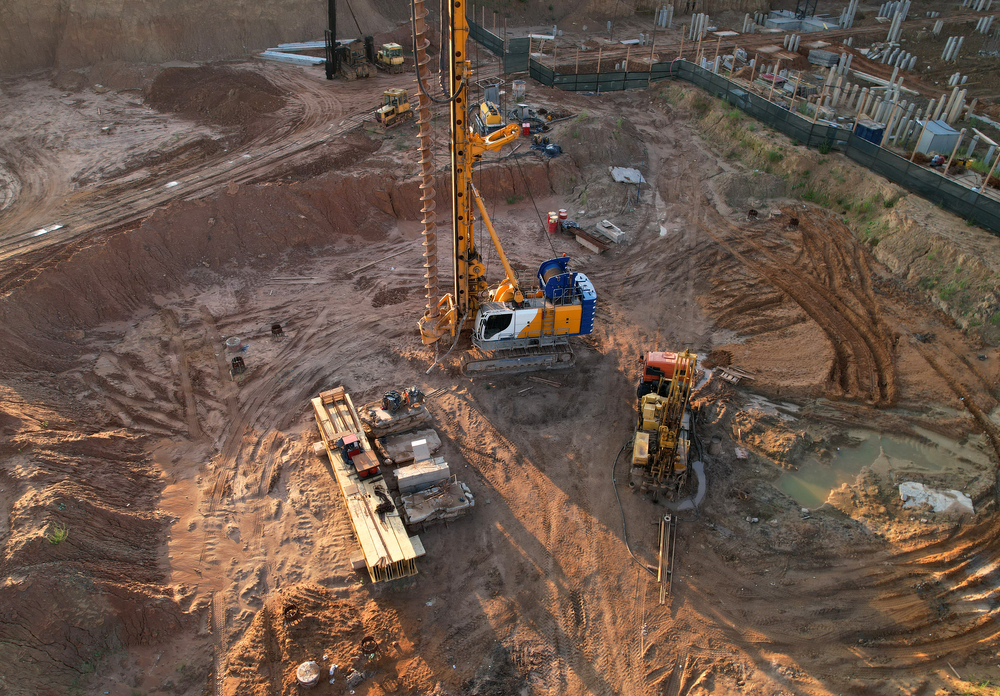Geotheta for Beginners

A geotechnical designer is a specialized civil designer that concentrates on the actions of dirt, rock, and various other materials located underneath the Earth's surface. They apply scientific concepts and engineering methods to evaluate the residential or commercial properties and habits of these products to sustain the risk-free and effective layout, construction, and maintenance of facilities jobs.
They conduct site examinations, collect examples, do lab tests, and assess data to examine the suitability of the ground for construction jobs - Geo Tech Engineering. Based on their searchings for, geotechnical engineers provide recommendations for foundation style, slope security, keeping frameworks, and mitigation of geotechnical risks. They collaborate with other professionals, such as designers, architectural engineers, and building and construction teams, to guarantee that geotechnical factors to consider are integrated into the overall project design and implementation
By examining the habits and buildings of dirt and rock, they can identify potential geotechnical hazards such as landslides, dirt settlement, or slope instability. Their expertise assists avoid failures or mishaps that could endanger lives and building. Below are some in-depth duties and obligations of a geotechnical engineer: Website Investigation: Geotechnical designers conduct site investigations to gather information on subsurface problems.
They translate the data to understand the residential properties and behavior of the soil and rock, including their stamina, leaks in the structure, compaction attributes, and groundwater problems. Geotechnical Evaluation and Design: Geotechnical engineers assess the data collected throughout site examinations to examine the security and viability of the website for building jobs. They execute geotechnical calculations and modeling to assess factors such as bearing ability, negotiation, slope security, lateral planet stress, and groundwater circulation.
6 Easy Facts About Geotheta Described
Structure Design: Geotechnical engineers play a critical duty in designing foundations that can safely support the designated structure. They analyze the dirt problems and load needs to determine the ideal structure type, such as shallow structures (e.g., grounds), deep foundations (e.g (https://packersmovers.activeboard.com/t67151553/how-to-connect-canon-mg3620-printer-to-computer/?ts=1722609175&direction=prev&page=last#lastPostAnchor)., piles), or specialized strategies like dirt enhancement. They consider aspects such as negotiation restrictions, birthing capability, and soil-structure communication to create optimal structure layouts
They evaluate building plans, screen site activities, and carry out area evaluations to verify that the style referrals are followed. If unforeseen geotechnical issues occur, they examine the circumstance and offer referrals for remediation or changes to the style. Danger Analysis and Reduction: Geotechnical designers analyze geotechnical risks and dangers connected with the task website, such as landslides, liquefaction, or soil disintegration.

Cooperation and Communication: Geotechnical designers work very closely with various other experts associated with a project, such as designers, structural engineers, additional hints and construction teams. Effective communication and cooperation are necessary to integrate geotechnical considerations into the general project style and building process. Geotechnical engineers give technical experience, response inquiries, and make sure that geotechnical demands are met.
The 6-Minute Rule for Geotheta
Below are some kinds of geotechnical engineers: Foundation Designer: Foundation designers focus on creating and analyzing foundations for structures. They analyze the dirt conditions, lots requirements, and site characteristics to identify one of the most appropriate structure type and design, such as shallow structures, deep foundations, or specialized strategies like pile foundations.
They evaluate the factors affecting incline stability, such as soil properties, groundwater conditions, and slope geometry, and establish strategies to stop incline failings and minimize risks. Quake Designer: Quake engineers specialize in examining and making structures to endure seismic pressures. They evaluate the seismic risk of a website, evaluate soil liquefaction possibility, and establish seismic design requirements to make sure the safety and security and resilience of structures throughout earthquakes.
They execute area screening, collect examples, and analyze the accumulated data to define the soil residential or commercial properties, geologic formations, and groundwater problems at a site. Geotechnical Instrumentation Engineer: Geotechnical instrumentation designers concentrate on surveillance and gauging the habits of soil, rock, and frameworks. They mount and keep instrumentation systems that keep track of variables such as dirt negotiation, groundwater degrees, slope motions, and architectural variations to assess efficiency and provide very early warnings of prospective issues.
Geotheta Fundamentals Explained
They tend to be investigatory individuals, which indicates they're intellectual, introspective, and investigative. They wonder, systematic, sensible, logical, and sensible. A few of them are additionally social, indicating they're kind, generous, cooperative, person, caring, practical, understanding, sensible, and friendly. Does this seem like you? Take our complimentary job examination to locate out if geotechnical engineer is among your leading job matches.
In the office atmosphere, geotechnical designers make use of specialized software application tools to carry out estimations, develop designs, and evaluate information. They prepare reports, testimonial project specifications, interact with customers and staff member, and coordinate task tasks. The office setting offers a favorable atmosphere for study, analysis, and cooperation with other specialists involved in the project.
4 Simple Techniques For Geotheta
They often check out job websites to conduct website examinations, evaluate geotechnical problems, and gather information for evaluation. These visits entail taking a trip to different locations, in some cases in remote or difficult surfaces. Geotechnical designers may do dirt sampling, conduct examinations, and monitor construction activities to make sure that the geotechnical facets of the project are being executed correctly.
Geotechnical designers likewise operate in specialized geotechnical laboratories. In these facilities, they perform experiments, do tests on dirt and rock examples, and evaluate the design residential or commercial properties of the products. Geotechnical laboratory designers function thoroughly in these environments, handling screening devices, running instruments, and recording data. They work together with other laboratory personnel to make sure accurate and reputable testing results.
Comments on “The Greatest Guide To Geotheta”